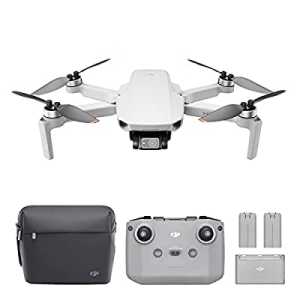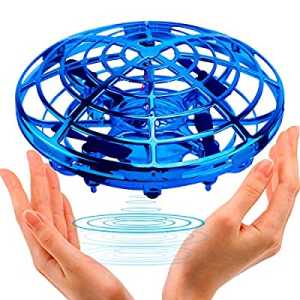
Innovations In Dental Care: What To Know

Dental care has evolved significantly over the years, moving beyond traditional methods and embracing innovative technology and techniques. These advancements have made treatments quicker, more comfortable, and more effective, improving patient experiences and outcomes. For anyone curious about the future of dental care or wondering what’s new in the field, here’s an overview of some of the most groundbreaking innovations and how they’re transforming oral health care.
1. 3D Printing for Custom Dental Solutions
3D printing is revolutionizing how dentists create custom dental devices, from crowns and bridges to clear aligners and even dentures. Previously, creating dental prosthetics required multiple steps, including molds, temporary fittings, and several dentist visits. Now, 3D printing technology allows for precise, individualized prosthetics that can often be made in just one or two appointments. This shift minimizes patient discomfort and reduces the waiting time for custom dental solutions, allowing patients to enjoy restored smiles more quickly.
3D printing’s precision means that devices fit better and perform more naturally in the mouth. This level of accuracy in dentistry helps improve long-term outcomes, ensuring that devices are functional and comfortable.
2. Digital Impressions for Improved Accuracy
In the past, getting dental impressions meant biting down on a sticky putty that often felt uncomfortable and could trigger gagging. Today, digital impressions are a much more patient-friendly and accurate alternative. Using a small camera, dentists can capture detailed 3D images of a patient’s teeth and gums, eliminating the need for traditional molds.
Digital impressions don’t just improve patient comfort; they also enhance the accuracy of restorations like crowns, veneers, and braces. This means fewer adjustments are needed and allows for quicker, more reliable outcomes. Digital scans are also easily shared with labs or other specialists, making it convenient to coordinate multi-step procedures.
3. Laser Dentistry: Precise and Less Painful Treatments
Laser dentistry has opened up new possibilities for treating a variety of dental issues with greater precision and less discomfort. From treating cavities to reshaping gum tissue, lasers allow dentists to perform procedures without the need for drills or scalpels in some cases. Lasers offer precision that minimizes tissue damage, allowing for faster recovery times and reducing the risk of infection.
Laser treatments are particularly beneficial for procedures like gum contouring, cavity detection, and even root canal therapy. They make many dental procedures less invasive, which can help to reduce anxiety for patients with a fear of needles, drills, or other traditional dental tools.
4. Teledentistry: Expanding Access to Dental Care
One of the major trends in healthcare, including dentistry, is the rise of telehealth services. Teledentistry allows patients to consult with their dentist from the comfort of home through video calls or messaging. This innovation is especially beneficial for routine checkups, follow-ups, and consultations. It’s ideal for individuals in remote areas who have limited access to dental clinics or those who need dental guidance but cannot make it to an in-person appointment due to health concerns.
Teledentistry has proven to be valuable in providing timely advice for urgent dental concerns, making dental care more accessible and efficient. Patients who may otherwise avoid the dentist due to logistical challenges now have an easier option to stay on top of their oral health.
5. AI-Driven Diagnostics for Early Detection
Artificial intelligence (AI) has made its way into the dental field, particularly for diagnostics. AI software can now analyze dental X-rays and images with remarkable accuracy, assisting dentists in identifying conditions like cavities, gum disease, and even oral cancer in their early stages. These systems are not only accurate but are also capable of identifying potential issues before they become more serious problems, allowing for more proactive care.
AI-driven diagnostics can analyze complex images quickly, helping to reduce human error and ensuring that patients receive a correct diagnosis. This is particularly useful in detecting subtle abnormalities that could go unnoticed, ultimately leading to earlier and more effective treatments.
6. Regenerative Dentistry: The Future of Tooth Repair
Regenerative dentistry is one of the most exciting frontiers in dental research. Scientists are exploring ways to use stem cells to regrow teeth, potentially eliminating the need for fillings, crowns, and even dental implants. The idea is that instead of replacing a damaged tooth with an artificial substitute, stem cell treatments could stimulate the body’s own ability to heal and repair itself.
Although regenerative dentistry is still in the experimental stages, its potential applications are incredibly promising. This field could one day allow for damaged teeth to be restored in a way that feels more natural, as they would effectively be re-grown rather than replaced.
7. Eco-Friendly Dentistry for a Sustainable Future
Many dental practices are now committed to reducing their environmental impact. Innovations in eco-friendly dentistry include using biodegradable materials, reducing the use of single-use plastics, and adopting sustainable energy sources for dental offices. Some practices are also turning to digital records to reduce paper waste and using digital X-rays, which are safer for the environment and patients alike due to lower radiation levels.
Eco-friendly practices in dentistry reflect a broader trend towards sustainability in healthcare, showing a commitment to protecting the environment while providing quality patient care.
Why These Innovations Matter
Advancements in dental care are not just about convenience; they significantly impact patient outcomes, accessibility, and comfort. New technologies and methods make it easier to provide precise, effective treatments while minimizing discomfort. For patients, these changes mean improved treatment experiences, faster recovery times, and better long-term oral health.
As dental technology continues to evolve, patients can expect even more improvements in terms of safety, accessibility, and quality of care. Embracing these innovations allows individuals to make informed choices about their dental health, benefiting from the latest advancements available.
Conclusion
Innovations in dental care, from 3D printing and digital impressions to AI diagnostics and eco-friendly practices, are shaping the future of dentistry. These advancements make dental visits more comfortable, efficient, and effective, giving patients the confidence to seek treatment when needed. By staying informed about these developments, you can be proactive about your oral health, taking advantage of modern dentistry’s best offerings to ensure a healthier, brighter smile.
In a world where healthcare is rapidly evolving, dental care is keeping pace, with Smile Gallery Dental Wellness Centre leading the way as a trusted dental clinic in Bhopal. Prioritizing patient comfort, precision, and convenience, they offer modern solutions to ensure the best possible care for their patients.
Author Bio
Article Comments
No Comments!
At present there are zero comments on this article.
Why not be the first to make a comment?
Similar Articles
Search Pages
Upgrade User Account
account to full use of editor,
including hyperlinks
Article Categories
There are zero sub-categories in this parent category.
There are zero sub-categories in this parent category.











